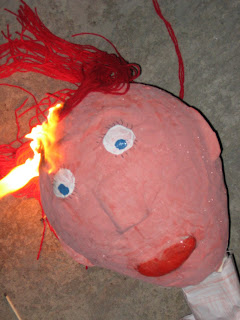Alisha and I were fortunate enough to welcome our first visitors last weekend. My first Spanish teacher from Fort Osage Junior High and good friend Linda Drown came to Cajamarca with Rosa, her friend from Lima. Alisha and I went to Cajamarca to meet them at the airport, and we spent the day in the city seeing some of the sights. Then we took the night bus to Chota, where Linda and Rosa stayed for two days. It didn’t take us too long to see most of Chota, so we spent a lot of time with our host family sharing all sorts of stories. Alisha and I showed Linda and Rosa most of the places where we’re currently doing projects, our world map, the daily market, and the livestock market. The night bus between Cajamarca and Chota passes some points that are at a pretty high elevation, which makes the ride quite cold, so Linda decided to buy a poncho in Chota and show it off in the photo below.

It felt really nice to have someone from home visit us. When you’re away from home for a long time, you start to feel like you’re losing a connection with the places that used to be so familiar, and having someone who shares a knowledge of those places visit you helps to reestablish that connection. And I am particularly honored that Linda, who has in large part inspired my love of Spanish and Hispanic culture, was the first person to bring a little piece of home to us and take a little piece of our experience in Peru back to the States.













